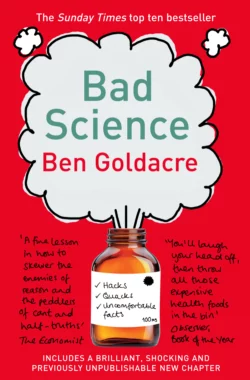Bad Science

Ben Goldacre
Тип: электронная книга
Жанр: Зарубежная образовательная литература
Язык: на английском языке
Стоимость: 774.26 ₽
Издательство: HarperCollins
Дата публикации: 16.04.2024
Отзывы: Пока нет Добавить отзыв
О книге: Full of spleen, this will be a hilarious, invigorating and informative journey through the world of Bad Science.When Dr Ben Goldacre saw someone on daytime TV dipping her feet in an ′Aqua Detox′ footbath, releasing her toxins into the water, turning it brown, he thought he′d try the same at home. ′Like some kind of Johnny Ball cum Witchfinder General′, using his girlfriend′s Barbie doll, he gently passed an electrical current through the warm salt water. It turned brown. In his words: ′before my very eyes, the world′s first Detox Barbie was sat, with her feet in a pool of brown sludge, purged of a weekend′s immorality.′Dr Ben Goldacre is the author of the Bad Science column in the Guardian. This book will be about all the ′bad science′ we are constantly bombarded with in the media and in advertising. At a time when science is used to prove everything and nothing, everyone has their own ′bad science′ moments – from the useless pie-chart on the back of cereal packets to the use of the word ′visibly′ in cosmetics ads. This book will help people to quantify their instincts – that a lot of the so-called ′science′ which appears in the media and in advertising is just wrong or misleading. It will be satirical and amusing – exposing the ridiculous – but it will also provide the reader with the facts they need.Full of spleen, this will be a hilarious, invigorating and informative journey through the world of Bad Science.